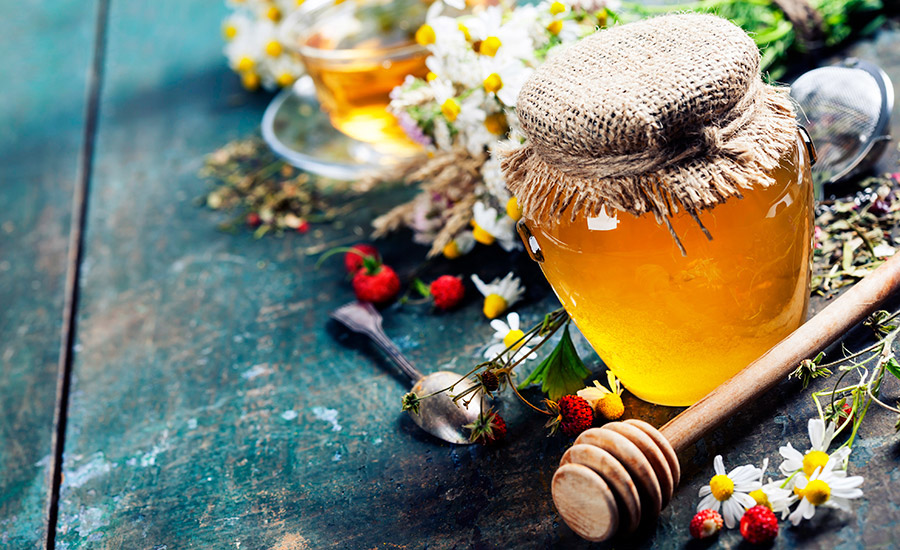This month, I had the pleasure of attending the Honey Editors Summit, which was held in Chicago from September 21-22. The summit was sponsored by the National Honey Board, whose goal is to educate consumers about the benefits and uses for honey, as well as honey products.
I’m a foodie from way back, so of course I’ve had honey and products with honey before—but never like this. We sampled over ten variations of honey, all of which had its own unique taste, as well as products such as honey bread, biscuits made with honey, and even some honey vodka. We toured the Goose Island headquarters and plant, and had their Gillian beer; I’m not usually a fan of beer, but the Gillian was great. We had some mead too, a sweet drink made with honey, from Michigan’s own B. Nektar, whose taproom is literally down the street from where I live.
That Wednesday night, we had dinner at Publican Quality Meats (PQM, for short) in the city and it was maybe one of the best meals I’ve ever had—and as an avid foodie and Yelper, I eat out quite a bit. We started with an avocado salad (squash, tomato, watercress, shallot, sesame seed, and tahini vinaigrette), then moved on to the entrees, sea bass filet and country ribs; the ribs had charred onion, heirloom tomato, and ricotta salsa, with a side of tempura cauliflower (fresno chile, basil, honey, and riata). For dessert, a peach and nectarine cobbler was served, with a rye flour biscuit topping and bitter almond whipped cream. Although the entire meal was beyond delicious, the tempura cauliflower was unlike anything I’ve ever had, and it makes me not only want to eat my veggies, but devour them.
My honey summit experience got me thinking about the foods I normally eat at home and how I can start substituting honey instead of sugar in them. In today’s society, and especially in my age group (millennials), we seem to always be looking for “better for you” substitutes. According to a Packaged Facts online survey, 28% of consumers reported increasing their honey use over the past 1-2 years. Sugar, especially the “regular” kind (white granulated), is being compared to tobacco and cigarettes, in that it poses a serious danger to your health. And zero-calorie sweeteners, which once were king, are now becoming less popular.
The National Honey Board did a Consumer Segmentation Study and found that 2/3 of its respondents are checking food labels to see what type of sweetener is used in products; over 1/3 are looking for honey specifically. Consumers already know that honey is a versatile product—it’s all-natural and it’s also a good remedy if you’re sick. It can even be used to treat burns or cuts.
The NHB also found that they were able to break their group of respondents into six distinct segments of Americans: No-Nonsense Boomers (11%), Busy Natural Seekers (17%), Complacent Retirees (21%), Stressed Multi-Taskers (26%), Holistic Influencers (13%), and Balanced Enthusiasts (11%). The Natural Balancers, which slightly skewed male and under 45 years of age, usually living in the West or Northeast regions, were those that were most likely to value honey as an ingredient, as they approach health and wellness holistically by prioritizing fresh, natural, and organic foods, but without sacrificing taste. This group of people also cook and bake often, but due to their busy lifestyles, will often go for convenient meal/snack options.
Natural Balancers also eat honey regularly throughout the week, during breakfast and even in baked goods, as it’s an ingredient that they feel good about feeding to their families.
I unfortunately probably fall into the Stressed Multi-Taskers group, as might most millennials, but I do enjoy cooking, and I try to cook often—so perhaps one day, I’d be classified as a Natural Balancer. For now, I’ll continue enjoying honey in tea, chicken stir-fry (my secret ingredient—shh), and in various alcoholic and non-alcoholic beverages, and I’ll be on the lookout for ways I can replace my sugar intake with honey, thereby making a smarter choice overall, health-wise.
Cheers to that!

